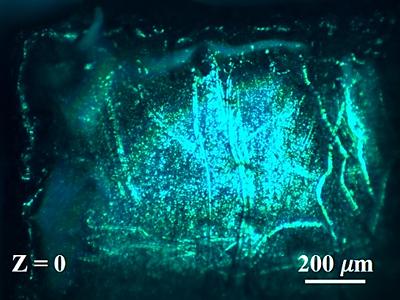Ultrasonic streams and the implications for COVID-19 infection prevention

A recent paper, published in collaboration between Sloan Water Technology Ltd. and the University of Southampton, explores how well ultrasonic stream devices clean away lubricants, with and without soap, using room-temperature water. Cleaning lubricants, oils and greases off materials is important in its own right, for workshop, laboratories, industry (especially manufacturers and recyclers). Many materials (salads, some electronics, etc.) cannot tolerate hot water and degreasers, soaps and detergents, and consequently the ability to remove lubricants without heat or chemicals is important. Furthermore, such ability would have significant environmental implications, reducing electrical power consumption by eliminating the need to heat water, and conforming with the Montreal Protocol in its drive to replace the use of pure methyl chloroform or chlorofluorocarbon solvents with aqueous cleaning solutions.

IMAGES - The stainless steel surfaces that were tested for cleaning show, under magnification (shown above) how scratched even normal stainless steel surfaces can become, scratches in which contaminants may resist traditional means of cleaning; and (shown on the right) the lubricant surface when it is placed on the steel figure shows the height of the microscopic focal point relative to the steel surface.
The work, however has implications for the current COVID-19 pandemic. It is still extremely difficult for engineering mitigations to gain access to Category-3 laboratories that are required for experimentation with the SARS_CoV-2 virus, and at the time when they paper was drafted, it was impossible. There is a long waiting list, with engineering solutions rarely a priority. and the costs were significant. However the team released that the SARS_CoV-2 virus did not naturally exist in isolation outside of the body, but instead resides in respiratory secretions (composed mainly of mucin glycoproteins, surfactant and intercellular fluid): without the protection of those secretions, it is relatively fragile.
Therefore by testing the ability of the ultrasonic water streams to remove respiratory secretions (or in this case, lubricant proxies for them) from surfaces, tests the potential for such streaks to interrupt the chain-of-infection. By testing the ability to remove such lubricants, the protocol circumvents the need to gain access to the SARS-CoV-2 virus itself.
Professor Leighton, Principle Investigator for the study, said “SARS-CoV2 spreads primarily by droplet, and probably aerosol, routes as do most respiratory infections. Bodily fluids (such as respiratory secretions) containing the virus are expelled from airways in droplets of varying sizes. Very small droplets (of aerodynamical diameter around 2.5-microns) may remain airborne for long periods and be inhaled, leading to direct aerosol transmission. Larger droplets (the majority) settle on surfaces, and may be collected on hands and conveyed to mucous membranes of mouths, noses and eyes where the virus can gain ready access to the body; this is secondary-transmission. It is such secondary-transmission that the ultrasonic streams tested here could potentially interrupt.”
“The ability to clean surfaces of died-on lubricants has great potential, not just for breaking the chain of infection for COVID-19, but also for a vast number of other infectious agents at the same time (influenza, food poisoning etc.) because, unlike specific measures like vaccines and antiviral therapeutics, it is generally effective against a wide class of infectious agents, including bacteria and fungi . During the early days of a pandemic, supplies of consumables can be jeopardised by broken supply lines, panic buying, and illness amongst staff in the production, warehousing, and delivery sectors. Cleaning regimes come under scrutiny, leading to a greater rate of consumption of these cleaning agents and water. Instructions may even be issued to clean and re-use items formerly considered as disposable (e.g. PPE). Moreover, installations that are mobile (e.g. ambulances) or in the process of being set up (mobile hospitals, clinics and mortuaries) can take time to establish access of hot water and sufficient stocks of bleach and detergents etc. In those early days, in particular, increasing the ability of room-temperature water to clean without chemicals is critically important.”
The PhD student and first author on the paper, Maryam Malakoutikhah, said “Investigating the performance of such an incredible innovation is, and will be, one of the proudest periods of my life. Knowing how significantly such technology can reduce our environmental footprint on Earth, I hope to see the application of this ultrasonic stream technology internationally in every industrial cleaning stage. I am very grateful to be part of this positive step towards a better world. I would like to specially thank Professor T G Leighton for trusting me and giving me this opportunity.”
The paper is:
Malakoutikhah, M., Dolder, C. N., Secker, T. J., Zhu, M., Harling, C. C., Keevil, C. W. and Leighton, T. G. (2020) Industrial lubricant removal using an ultrasonically activated water stream, with potential application for Coronavirus decontamination and infection prevention for SARS-CoV-2. Transactions of the Institute of Metal Finishing, 98(5), 258-270 (doi: 10.1080/00202967.2020.1805221).